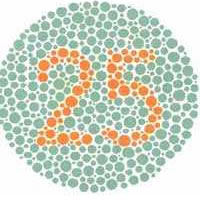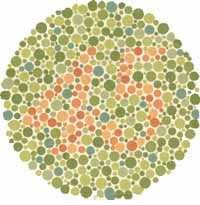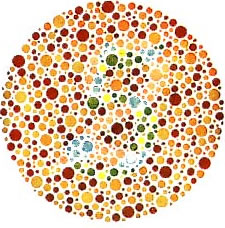Do you have difficulty telling if colors are blue and yellow, or red and green?These are the primary signs of color vision deficiency.Contrary to popular belief, color blind people rarely see only in gray.
Color blindness is a hereditary disease in which the faulty ‘gene’ is found only on the X chromosome. It is more commonly seen in men and almost always inherited from mother to son. (Explanation: Women have two chromosomes X and males have one chromosome X and one chromosome Y. In X-linked recessive diseases in women, both X chromosomes must be defective to cause the disease to occur. If a chromosome X is defective, the disease does not occur,but it can be transmitted to children. In males, the only chromosome X causes the disease, so a person with color blindness has a mother who is either a color blind or a carrier.) In this chromosomal disorder, the cone cells in the retina that are responsible for understanding the color are impaired, that is why the patient does not recognize the colors properly.
Color blindness may also occur due to the optic nerves or the retina diseases. In these cases, only the affected eye becomes color blind, and this disorder becomes aggravated over time, so that it may turn into a full color blindness in which the patient sees only gray. These patients usually have difficulty in diagnosing blue and yellow.
Symptoms of Color Blindness
• Problems in the diagnosis of blue and green (the most common case)
• Problems in the diagnosis of blue and green
Color Blindness Diagnosis
Color blindness is often diagnosed using a color chart called “The Ishihara Color Plate Test (Ishihara)”. Ishihara plates contain dots in different colors. These dots form the shape of a number which is invisible or difficult to see for those with color blindness. More precise tests are performed if a problem in the patient's color vision is detected. You can see samples of Ishihara test here:



Color Blindness Treatment
There is no cure for color blindness. Early diagnosis of color vision deficiency may prevent learning difficulties during school years. In this case, it is best for the child's parents to speak with school principals and the child's teacher.
Some patients use special lenses to enhance color perception, which are available in either contact lens or eyeglass lens form.
In most of the cases, patients may remember items by their order rather than their color. For example they would remember that the red light is always at the top of the traffic signal and green is at the bottom.